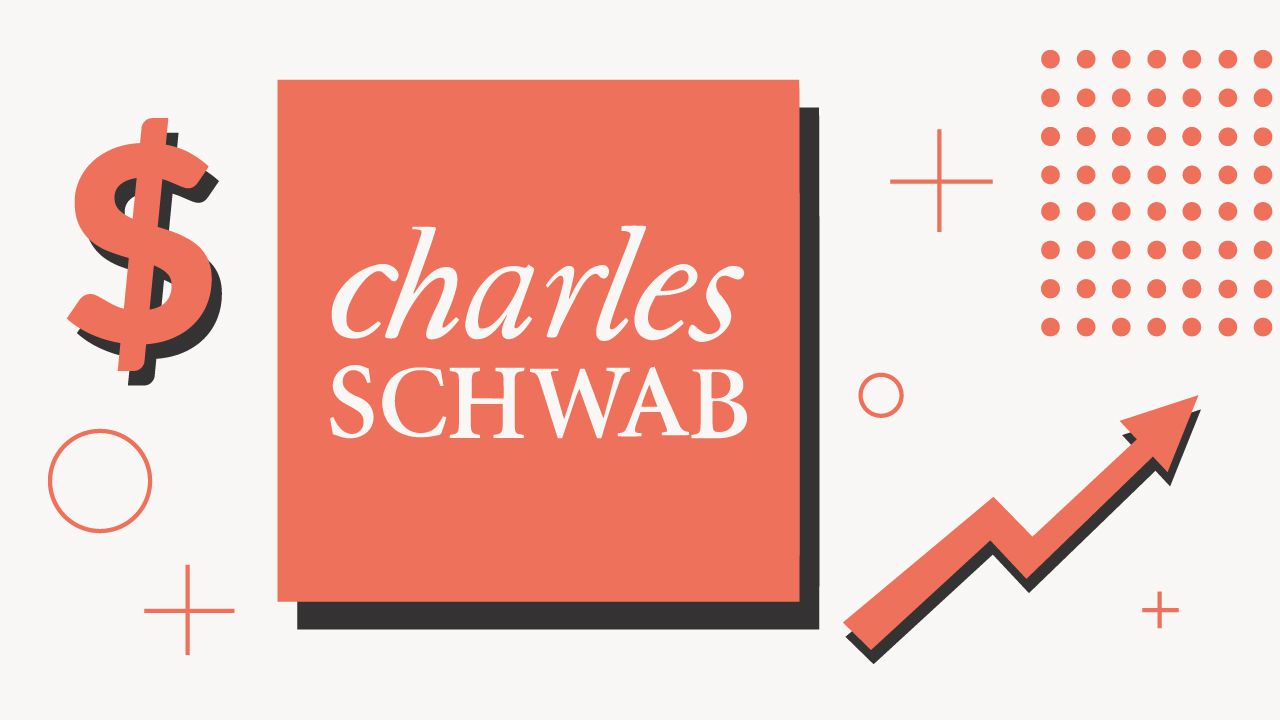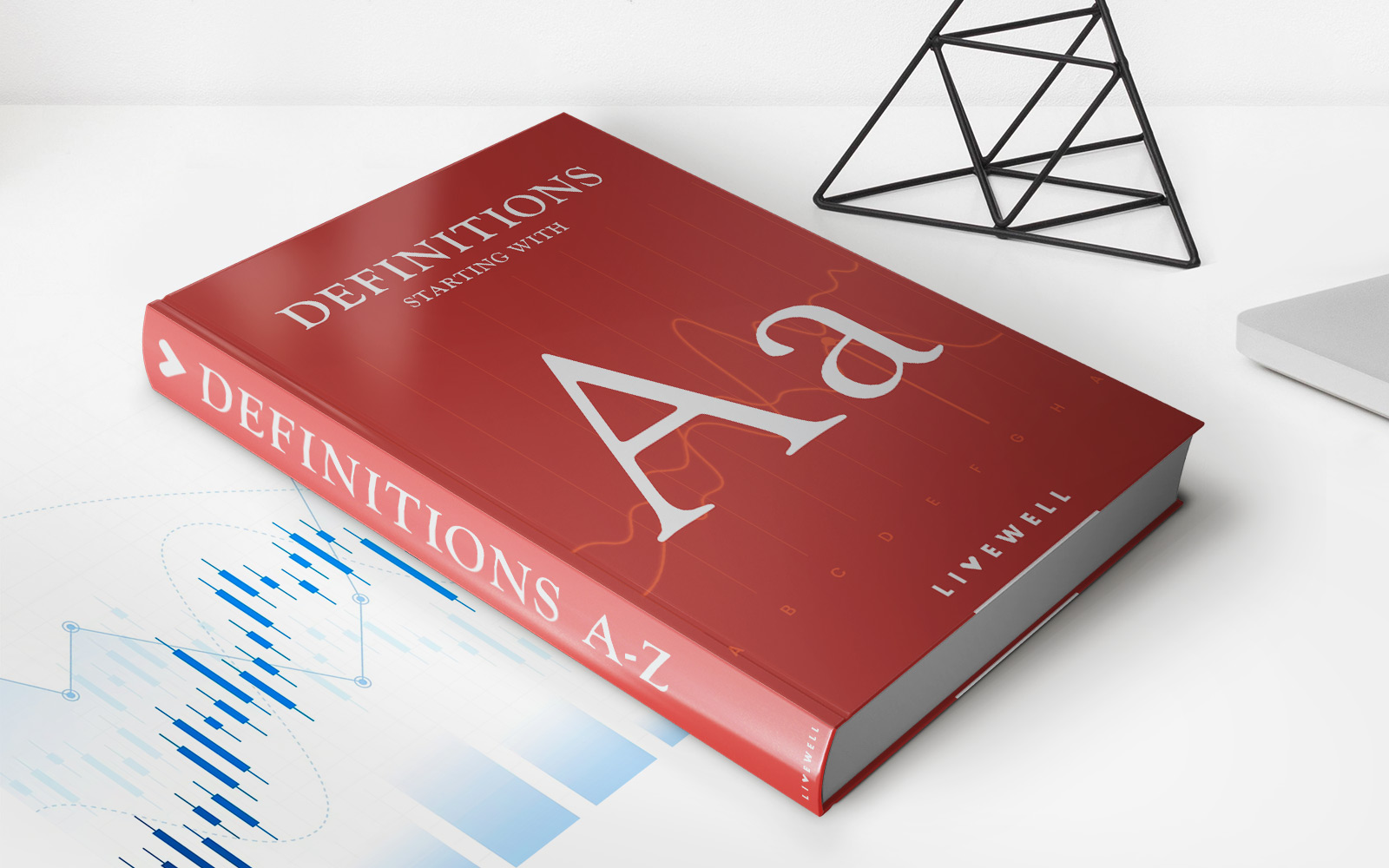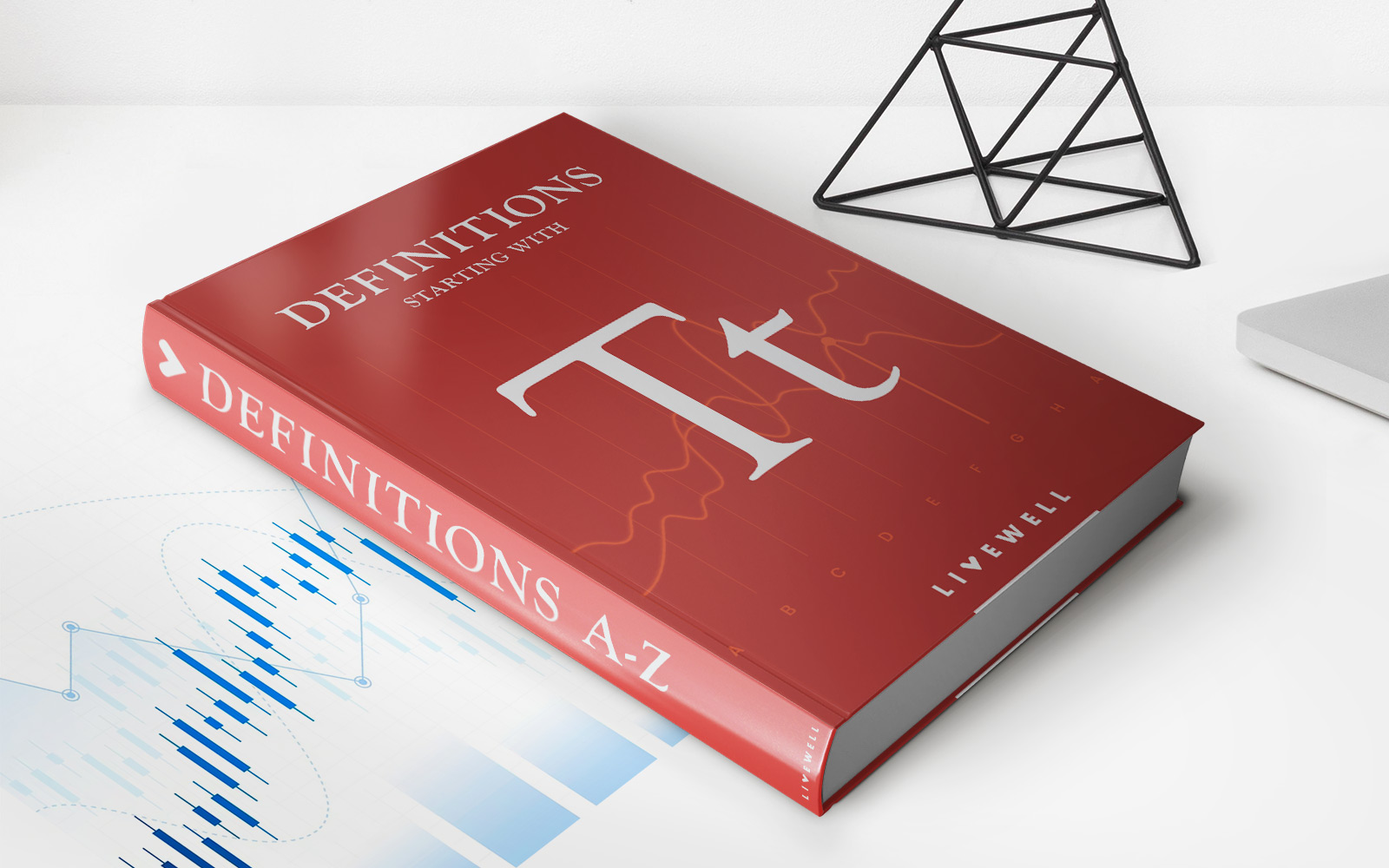

Finance
How To Buy I Bonds
Published: October 12, 2023
Learn the best strategies for buying I Bonds and managing your finances. Discover how to maximize your returns with our expert tips and advice.
(Many of the links in this article redirect to a specific reviewed product. Your purchase of these products through affiliate links helps to generate commission for LiveWell, at no extra cost. Learn more)
Table of Contents
- Introduction
- What are I Bonds?
- Benefits of Investing in I Bonds
- Eligibility and Purchase Limitations
- How to Open an Account to Buy I Bonds
- Calculating and Setting Purchase Amount
- Methods of Buying I Bonds
- Completing the Purchase Process
- Understanding I Bond Interest Rates
- Tax Considerations for I Bonds
- Redeeming I Bonds
- Potential Risks and Limitations
- Conclusion
Introduction
Investing is an essential part of financial planning, but navigating the vast world of investment options can be daunting. One option that investors often consider is purchasing I Bonds. Not only do I Bonds offer a safe and reliable investment opportunity, but they also provide unique benefits that set them apart from other investment vehicles.
I Bonds are a type of savings bond issued by the United States Department of the Treasury. They were introduced in 1998 as a way to allow individual investors to participate in the government bond market. I Bonds are considered low-risk investments, making them an attractive option for individuals who are looking for stable returns.
One of the key features of I Bonds is their inflation protection. Unlike traditional bonds, the interest rate on I Bonds is a combination of a fixed rate and an inflation rate. This means that as inflation rises, the interest rate on I Bonds will adjust accordingly, providing investors with a safeguard against the eroding effects of inflation on their investment.
Another advantage of I Bonds is their tax benefits. The interest earned on I Bonds is exempt from state and local income taxes, making them advantageous for investors in states with high tax rates. Additionally, I Bonds can be tax-free if used for qualified educational expenses, further enhancing their appeal for families saving for their children’s education.
Before diving into the world of I Bonds, it is important to understand the eligibility requirements and purchase limitations. Individuals must be US citizens, residents, or employees of US territories to be eligible to purchase I Bonds. The minimum investment amount is $25, and there is an annual purchase limit of $10,000 per Social Security number.
In this comprehensive guide, we will walk you through the process of buying I Bonds, including how to open an account, calculate the purchase amount, and complete the purchase process. We will also discuss important factors to consider like I Bond interest rates, tax implications, and the process of redeeming your I Bonds when the time comes.
Investing can be a powerful tool for building wealth, and I Bonds offer a unique way for individuals to protect their investments and achieve financial goals. So, whether you’re a new investor exploring your options or a seasoned investor looking to diversify your portfolio, read on to discover everything you need to know about buying I Bonds.
What are I Bonds?
I Bonds, also known as Series I Savings Bonds, are a type of savings bond issued by the United States Department of the Treasury. These bonds are designed to provide a safe and accessible investment option for individual investors.
Unlike traditional bonds, I Bonds offer a unique combination of a fixed interest rate and an inflation rate component. The interest rate on I Bonds is divided into two parts: a fixed rate that remains constant throughout the bond’s term and an inflation rate that adjusts with changes in the Consumer Price Index (CPI).
The fixed rate is determined at the time of purchase and remains fixed for the life of the bond. It represents the base rate of return that investors will earn on their investment. Additionally, I Bonds earn interest for up to 30 years, providing a long-term investment option for those looking to save for the future.
The inflation rate component is adjusted every six months to account for changes in the CPI. This ensures that the bond’s return keeps pace with inflation, preserving the purchasing power of the investment. If inflation is high, the overall interest rate on the I Bond will increase to reflect the rising prices. Conversely, if inflation is low, the interest rate will decrease.
One notable feature of I Bonds is that they offer a measure of protection against inflation. This feature makes them particularly appealing for conservative investors who want to ensure that their savings keep up with the rising cost of living.
Another advantage of I Bonds is their flexibility when it comes to maturity dates. I Bonds have a minimum holding period of one year, but investors can choose to hold onto them for up to 30 years. However, it’s important to note that if you redeem an I Bond within the first five years of owning it, you will forfeit the most recent three months of interest.
I Bonds can be purchased electronically through the TreasuryDirect website or in paper form through financial institutions. They are available in denominations ranging from $25 to $10,000, allowing investors to start with a small amount and gradually increase their holdings.
Overall, I Bonds are a versatile and attractive investment option for individuals seeking a safe haven for their savings while also protecting themselves against inflation. Their combination of fixed and inflation-adjusted interest rates provides a unique way to grow wealth over the long term. In the next section, we will explore the benefits of investing in I Bonds.
Benefits of Investing in I Bonds
Investing in I Bonds offers a range of benefits that make them an attractive option for investors seeking stability and potential growth. Here are some key advantages of investing in I Bonds:
- Inflation Protection: One of the biggest advantages of I Bonds is their built-in protection against inflation. The interest rate on I Bonds is adjusted twice a year to keep pace with changes in the Consumer Price Index (CPI). This means that even if inflation rises, the value of your investment will be protected, ensuring that your savings maintain their purchasing power over time.
- Safe and Low-Risk: I Bonds are backed by the U.S. government, making them one of the safest investment options available. They are not subject to market fluctuations or the risk of default. This security makes them an ideal choice for conservative investors who prioritize capital preservation.
- Tax Advantages: The interest earned on I Bonds is exempt from state and local income taxes. This tax advantage can be particularly beneficial for individuals living in states with high tax rates. Additionally, if you use the I Bonds for qualified education expenses, the interest may be entirely tax-free. This makes I Bonds an attractive investment option for families looking to save for their children’s education.
- Long-Term Investment: I Bonds have a maximum maturity period of 30 years, allowing investors to take advantage of the potential for long-term growth. They can serve as a reliable addition to a diversified investment portfolio and help individuals build wealth over an extended period.
- Flexibility: While there is a one-year minimum holding period for I Bonds, you have the option to hold onto them for up to 30 years. This flexibility allows you to tailor your investment strategy based on your financial goals and needs.
- Accessibility: I Bonds can be easily purchased online through the TreasuryDirect website or at financial institutions. With a minimum investment requirement of just $25, I Bonds are accessible to a wide range of investors, including those with limited funds to invest.
- Diversification: Including I Bonds in your investment portfolio can provide diversification, reducing the overall risk. Since I Bonds have a different risk and return profile compared to stocks and other investment vehicles, they can help offset fluctuations in other asset classes.
These benefits make I Bonds an attractive investment option for individuals who prioritize safety, value inflation protection, and seek potential long-term growth. In the next section, we will discuss the eligibility requirements and purchase limitations for investing in I Bonds.
Eligibility and Purchase Limitations
Before purchasing I Bonds, it is important to understand the eligibility requirements and purchase limitations set by the United States Department of the Treasury. Here are the key factors to consider:
- Eligibility: To be eligible to purchase I Bonds, you must be a United States citizen, resident, or employee of U.S. territories. Non-resident aliens, foreign corporations, and entities cannot invest in I Bonds.
- Minimum Investment: The minimum investment amount for I Bonds is $25. This allows individuals with limited funds to start investing and gradually increase their holdings over time.
- Maximum Purchase: There is an annual purchase limit for I Bonds. As of 2021, each Social Security number is limited to $10,000 worth of I Bonds. This limit ensures fair distribution and prevents individuals from overwhelming the market.
- Purchase Channels: I Bonds can be purchased either electronically through the TreasuryDirect website or in paper form through financial institutions. The TreasuryDirect website offers a convenient way to purchase and manage your I Bonds online, while financial institutions can provide personalized assistance and guidance with the purchase process.
- Tax Reporting: When investing in I Bonds, it is essential to keep track of your purchases and interest earnings for tax reporting purposes. You will receive a Form 1099-INT (or similar statement) from the Treasury Department, which reflects the interest earned on your I Bonds for the year.
- Gifts and Trusts: I Bonds can also be purchased as gifts or held in trust for others. This allows individuals to provide the gift of investment or set aside funds for future beneficiaries.
It is important to note that while I Bonds offer attractive benefits, they have specific limitations and are not suitable for every investor. Understanding the eligibility requirements and purchase limitations ensures that you are qualified to invest in I Bonds and can make informed decisions based on your individual circumstances.
Now that we’ve covered the eligibility and purchase limitations, let’s move on to the next section to learn how to open an account and calculate the purchase amount for buying I Bonds.
How to Open an Account to Buy I Bonds
Opening an account to buy I Bonds is a straightforward process that can be done online through the TreasuryDirect website. Here are the steps to open an account:
- Visit the TreasuryDirect website: Start by visiting the official website of TreasuryDirect at www.treasurydirect.gov.
- Create an account: Click on the “Open an Account” button on the homepage. You will be prompted to provide personal information such as your name, Social Security number, date of birth, and address. Follow the instructions to create your account credentials.
- Verify your identity: After creating an account, you will need to verify your identity. This can be done electronically by providing information from your credit report, or you may need to submit documentation such as copies of your driver’s license or passport.
- Set up security: To ensure the security of your account, you will need to set up two-factor authentication, such as a security code sent to your mobile device or email address. This additional layer of security helps protect your account from unauthorized access.
- Link your bank account: In order to fund your I Bond purchases, you will need to link your bank account to your TreasuryDirect account. This allows for easy transfer of funds back and forth between your bank and your TreasuryDirect account.
- Complete profile and preferences: Take the time to review and complete your profile and preferences in your TreasuryDirect account. This includes selecting your preferred communication method and notifications about your I Bond investments.
Once your account is set up, you can proceed with purchasing I Bonds directly through the TreasuryDirect website. The process is user-friendly and will guide you through the necessary steps to select the desired bond type, enter the purchase amount, and complete the transaction securely.
It’s worth mentioning that if you prefer to purchase paper I Bonds instead of electronic ones, you can obtain them by using your TreasuryDirect account. Simply select the paper bond option during the purchase process, and the physical bonds will be mailed to you.
Now that you know how to open an account to buy I Bonds, let’s move on to the next section to learn about calculating and setting the purchase amount for your I Bond investment.
Calculating and Setting Purchase Amount
When purchasing I Bonds, it’s important to calculate and set the appropriate purchase amount based on your investment goals and the available funds. Here are the key factors to consider:
- Investment Objectives: Start by clarifying your investment objectives. Are you investing for a specific financial goal, such as saving for retirement or funding a child’s education? Understanding your objectives will help determine the amount you should invest in I Bonds.
- Budgeting: Review your overall financial situation and assess how much you can comfortably allocate towards your I Bond investment. It’s crucial to consider your current expenses, other financial obligations, and emergency savings needs.
- Purchase Limit: Keep in mind that there is an annual purchase limit for I Bonds. As of 2021, the limit is $10,000 per Social Security number. Ensure that your desired purchase amount falls within this limit to avoid any issues during the purchase process.
- Calculating Future Value: Consider the future value you would like to achieve with your I Bond investment. The longer you hold the I Bonds, the more time they have to accrue interest. Use online calculators or financial planning tools to estimate the potential growth of your investment.
- Diversification: It’s essential to diversify your investment portfolio to minimize risk. Don’t allocate all your available investment funds solely towards I Bonds. Consider a balanced approach by spreading your investments across different asset classes.
- Additional Contributions: If you plan to make regular contributions to your I Bond investment, factor in how much you can afford to contribute on a consistent basis. This will help you determine the initial purchase amount and the subsequent contribution amounts.
- Professional Financial Advice: If you are uncertain about the appropriate purchase amount or need guidance regarding your investment goals, consider seeking advice from a financial advisor. They can help you evaluate your specific circumstances and make informed decisions.
By considering these factors and conducting careful analysis, you can determine the ideal purchase amount for your I Bond investment. Remember, investing is a personal decision based on individual goals and risk tolerance. Take the time to assess your situation before setting the purchase amount.
Now that you understand how to calculate and set the purchase amount, let’s move on to the next section to explore the different methods of buying I Bonds.
Methods of Buying I Bonds
There are two primary methods for purchasing I Bonds: electronic and paper. Each method offers its own advantages and considerations. Let’s take a closer look at these options:
- Electronic I Bonds: The electronic method is the most popular and convenient way to purchase I Bonds. It allows individuals to buy, manage, and redeem their bonds online through the TreasuryDirect website. Some key benefits of electronic I Bonds include:
- Convenience: With electronic I Bonds, you can purchase them from the comfort of your own home, 24/7. It eliminates the need for paperwork and provides immediate access to your investment.
- Automatic Tracking: Your electronic I Bonds are stored electronically, and you can easily view and track your holdings in your TreasuryDirect account. This simplifies portfolio management and eliminates the risk of physical bond loss or damage.
- Easy Redemption: When it’s time to redeem your electronic I Bonds, the process is seamless. You can request redemption online, and the funds are typically transferred directly to your linked bank account.
- Paper I Bonds: Paper I Bonds, on the other hand, are physical bonds that can be purchased through financial institutions such as banks or credit unions. While electronic I Bonds are more common, paper I Bonds offer some unique benefits:
- Tangible Asset: Holding a physical paper bond can be appealing for those who prefer a tangible representation of their investment.
- Gifts and Special Occasions: Paper I Bonds make great gifts for special occasions such as birthdays, weddings, or graduations. They can be presented as a physical token of investment and financial planning.
- Alternative for Non-Residents: Non-resident US citizens or individuals without a US address can still purchase paper I Bonds through qualified International Organization dealers.
Regardless of the method you choose, it’s important to consider your personal preferences, convenience, and the ease of managing and redeeming your I Bonds. Both electronic and paper I Bonds offer the same features and benefits, and the decision ultimately comes down to individual preference.
Now that you understand the different methods of buying I Bonds, let’s move on to the next section to explore how to complete the purchase process.
Completing the Purchase Process
Completing the purchase of I Bonds involves a straightforward process, whether you choose to buy them electronically or in paper form. Here are the steps to complete the purchase process:
- Electronic Purchase:
- Log in to your TreasuryDirect account on the TreasuryDirect website.
- Select the “BuyDirect” option and follow the prompted instructions.
- Specify the purchase amount and choose the desired bond type (electronic or paper).
- Authorize the transaction and confirm your purchase details.
- Funds for the purchase are generally deducted from your linked bank account.
- Once the purchase is completed, you will receive confirmation of ownership in your TreasuryDirect account.
- Paper Purchase:
- Visit a financial institution that offers paper I Bonds, such as a bank or credit union.
- Provide the necessary identification and complete the application form.
- Specify the purchase amount and indicate the recipient’s information if the bond is a gift.
- Submit the payment for the I Bonds.
- The financial institution will issue the paper I Bonds to you.
- Keep the physical bonds in a safe place as they represent your ownership.
It’s important to note that for both electronic and paper purchases, you will receive regular interest payments on your I Bonds. These payments can be directly deposited into your linked bank account or paid to you by check if you prefer.
Once you have completed the purchase process and received your I Bonds, it’s essential to keep the relevant documentation and record the bond information, including the issue date, face value, and interest rate. This will facilitate the management and tracking of your investment.
Regardless of the method you choose, keep in mind that I Bonds are a long-term investment. It’s generally recommended to hold them for at least five years to avoid any loss of interest earned in the first three months of ownership.
Now that you understand how to complete the purchase process, let’s move on to the next section to explore the factors related to I Bond interest rates.
Understanding I Bond Interest Rates
The interest rates on I Bonds are different from those of traditional fixed-rate bonds. They are calculated based on a combination of a fixed rate and an inflation rate. Understanding how these rates work is crucial when investing in I Bonds. Here’s what you need to know:
Fixed Rate: The fixed rate is set at the time of purchase and remains unchanged throughout the life of the bond. This rate is determined by the U.S. Department of the Treasury and reflects the government’s commitment to providing a stable return on investment. The fixed rate represents the base rate of return on the I Bond.
Inflation Rate: The inflation rate is adjusted every six months and is based on changes in the Consumer Price Index (CPI). The CPI measures the average price change of a basket of goods and services over time. If the CPI increases, the inflation rate component of the I Bond interest rate goes up, which helps protect the bondholder from the eroding effects of inflation. Conversely, if the CPI decreases or remains stable, the inflation rate component of the interest rate may be lowered or remain the same.
Composite Rate: The composite rate is the combined result of the fixed rate and the inflation rate. It determines the total interest rate earned on the I Bond. The composite rate is calculated by adding the fixed rate and the semi-annual inflation rate together.
Interest Accrual: Interest on I Bonds accrues monthly and compounds semi-annually. This means that it is added to the bond’s value every month and then further contributes to future interest payments. The interest earned on I Bonds is taxable at the federal level, but it is exempt from state and local income taxes. It’s important to note that interest accrual ceases after 30 years, making I Bonds no longer an interest-earning investment beyond that point.
Rate Updates: The composite interest rate on I Bonds is updated every six months, on the bond’s semi-annual anniversary date. Any changes will be reflected in the subsequent interest payments. The U.S. Department of the Treasury announces these rate updates ahead of time, usually in May and November.
Potential for Growth: The combination of a fixed rate and an inflation rate allows I Bonds to provide the potential for growth over time. While the fixed rate guarantees a minimum return, the inflation rate ensures that the investment keeps up with the rising cost of living. This unique feature makes I Bonds an attractive option for preserving and growing purchasing power.
By understanding how I Bond interest rates are determined, investors can make informed decisions about their investment strategy and assess the potential return on their I Bond holdings. In the next section, we will explore the tax considerations related to I Bonds.
Tax Considerations for I Bonds
When investing in I Bonds, it is important to consider the tax implications associated with these bonds. Understanding the tax considerations can help you maximize the benefits of your investment. Here are the key factors to consider:
- State and Local Income Taxes: The interest earned on I Bonds is exempt from state and local income taxes. This tax advantage can be particularly beneficial for individuals living in states with high tax rates. However, it’s important to note that while the interest is exempt from state and local taxes, it is still subject to federal income tax.
- Federal Income Tax: The interest income from I Bonds is subject to federal income tax. However, unlike most investments, the tax liability on I Bonds is deferred until the bond is redeemed or reaches its 30-year maturity. This deferral allows investors to postpone paying taxes on the interest earned, potentially resulting in tax savings.
- Tax-Exempt Use: The interest earned on I Bonds may be entirely tax-free if used for qualified education expenses. This includes tuition, fees, and certain educational expenses incurred at eligible institutions. To qualify for this tax exemption, the bondholder must meet specific criteria and use the funds appropriately. It is essential to familiarize yourself with the IRS guidelines regarding the tax-exempt use of I Bonds for education expenses.
- IRS Reporting: Each year, the Treasury Department provides the bondholder with a Form 1099-INT or a similar statement summarizing the interest earned on I Bonds. It is important to report this income accurately on your federal tax return.
- Redemption Strategies: When redeeming I Bonds, it’s important to consider the potential tax impact. If the bonds have accrued a significant amount of interest, redeeming them in a single tax year may result in a larger tax liability. Strategically planning the timing of redemptions can help manage the tax consequences and optimize your overall tax situation.
- Professional Advice: Tax considerations can be complex, and everyone’s tax situation is unique. If you have questions or concerns about the tax implications of investing in I Bonds, it is advisable to consult with a tax professional or financial advisor who can provide personalized guidance.
Understanding the tax considerations associated with I Bonds allows you to make better-informed decisions and optimize the benefits of your investment. By taking advantage of the tax advantages and considering strategies to manage your tax liability, you can make the most of your I Bond investment.
Now that we have covered the tax considerations, let’s move on to the next section, which explores the process of redeeming I Bonds.
Redeeming I Bonds
Redeeming I Bonds is a straightforward process that allows bondholders to convert their investments into cash. Whether you are redeeming I Bonds electronically or in paper form, here are the key steps to consider:
- Electronic Redemption:
- Log in to your TreasuryDirect account on the TreasuryDirect website.
- Select the I Bonds you want to redeem from your portfolio.
- Specify the desired redemption amount, keeping in mind that you must redeem the full face value of the bond.
- Authorize the redemption and confirm the transaction details.
- The funds will be deposited into your linked bank account within a few business days.
- Paper Redemption:
- Visit a financial institution that handles U.S. Savings Bonds, such as a bank or credit union.
- Complete the necessary paperwork for redeeming your paper I Bonds.
- Provide identification and the physical paper bonds you wish to redeem.
- The financial institution will process your request, and you will receive the redemption amount either in cash or a direct deposit into your account, depending on their policies.
It’s important to note that when redeeming I Bonds, there are a few factors to consider:
- Tax Implications: The interest earned on I Bonds is subject to federal income tax. If you redeem your I Bonds before they reach their five-year minimum holding period, you may lose the most recent three months of interest. This penalty aims to encourage long-term investment and discourage short-term speculation.
- Redemption Timing: Consider the timing of your redemptions strategically. If you hold multiple I Bonds, evaluate your tax situation to minimize potential tax liabilities. Spreading out redemptions over multiple years may help reduce your overall tax burden.
- Estate Planning: In the event of your passing, I Bonds can be passed on to your designated beneficiaries. Upon your death, your beneficiaries can choose to continue holding the bonds or redeem them. It’s essential to communicate your intentions and keep your beneficiaries informed about the existence and location of your I Bonds.
- Replace Lost or Damaged Bonds: In case of lost, stolen, or destroyed paper I Bonds, it is possible to have them replaced by submitting the necessary forms and following the procedures outlined by the Treasury Department.
Whether you choose electronic or paper redemption, carefully follow the instructions provided by the Treasury Department or the financial institution to ensure a smooth and successful redemption process.
Now that you understand the redemption process, let’s move on to the next section to discuss potential risks and limitations associated with I Bonds.
Potential Risks and Limitations
While I Bonds offer numerous benefits and are considered a safe investment option, it is important to be aware of the potential risks and limitations. Understanding these factors can help you make well-informed decisions and manage your expectations. Here are some important considerations:
- Interest Rate Risk: Although I Bonds provide protection against inflation, their fixed and inflation rates can change over time. The fixed rate remains constant, but the inflation rate adjusts every six months based on the Consumer Price Index (CPI). Fluctuations in inflation can affect the overall interest rate earned on I Bonds. It’s important to be prepared for potential changes in interest rates and understand that they may not always keep up with inflation.
- Five-Year Holding Period: I Bonds have a minimum holding period of five years. If you redeem them before five years have passed, you will forfeit the most recent three months of interest. It is crucial to consider your investment timeframe and ensure that you have the financial stability to commit to the minimum holding period.
- Limited Liquidity: While I Bonds are relatively liquid, as they can be redeemed at any time after the initial one-year holding period, there may be circumstances where you need quick access to your funds. It’s important to assess your liquidity needs and ensure that you have readily available cash reserves for emergencies or unexpected expenses.
- Inflation Mismatch: While I Bonds provide inflation protection, their inflation rate adjustment may not perfectly align with your specific inflation expenses. The CPI used to calculate the inflation rate represents an average measurement, so there may be variations in individual inflation experiences. It’s essential to consider your personal inflation risks and evaluate whether I Bonds alone will sufficiently protect your purchasing power.
- Opportunity Cost: By investing in I Bonds, your money is tied up in a relatively low-risk investment. This means you may potentially miss out on other investment opportunities that offer higher returns. It’s important to evaluate the potential opportunity cost and consider how I Bonds fit into your overall investment strategy and goals.
It’s important to remember that investing involves risk, and no investment is entirely risk-free. While I Bonds offer stability, inflation protection, and tax advantages, they may not be suitable for everyone or for every financial goal. It’s crucial to assess your risk tolerance, investment timeframe, and financial objectives before deciding to invest in I Bonds.
Now that you are aware of the potential risks and limitations, let’s conclude with a summary of the key points covered in this guide.
Conclusion
Investing in I Bonds can be a valuable addition to your overall investment strategy. These savings bonds offer numerous benefits, including inflation protection, tax advantages, and a safe investment option backed by the U.S. government. However, it’s essential to consider the key factors discussed throughout this guide.
Understanding the eligibility requirements and purchase limitations ensures that you are eligible to invest in I Bonds and can make informed decisions. Opening an account through the TreasuryDirect website provides easy access to the electronic purchase of I Bonds, while paper bonds offer tangible ownership.
When calculating the purchase amount, consider your investment objectives, budget, and the maximum annual purchase limit. Take advantage of online calculators to estimate the potential growth of your investment and ensure proper diversification within your portfolio.
Be knowledgeable about the unique interest rate structure of I Bonds, with a combination of fixed and inflation rates. This structure provides the potential for growth while protecting your investment against inflation. Understand the tax implications, including the exemption from state and local income taxes and the potential tax-free use for education expenses.
When the time comes for redemption, follow the appropriate steps for electronic or paper redemption, considering the potential tax consequences and strategic timing of redemptions. Be aware of the risks and limitations, such as interest rate fluctuations, minimum holding periods, and limited liquidity.
Investing in I Bonds requires careful consideration of your financial goals, risk tolerance, and investment timeframe. It is always recommended to seek professional advice if you have any questions or concerns regarding your specific financial situation.
I Bonds offer stability, protection against inflation, and tax advantages, making them a compelling option for preserving and growing your wealth. By understanding the intricacies of I Bonds and considering their benefits and limitations, you can make informed decisions that align with your financial objectives.
Remember, investing is a long-term journey, and proper planning is crucial for achieving your financial goals. I Bonds can play a valuable role in your investment portfolio, diversifying your holdings and providing a measure of security and growth potential in an ever-changing economic landscape.














